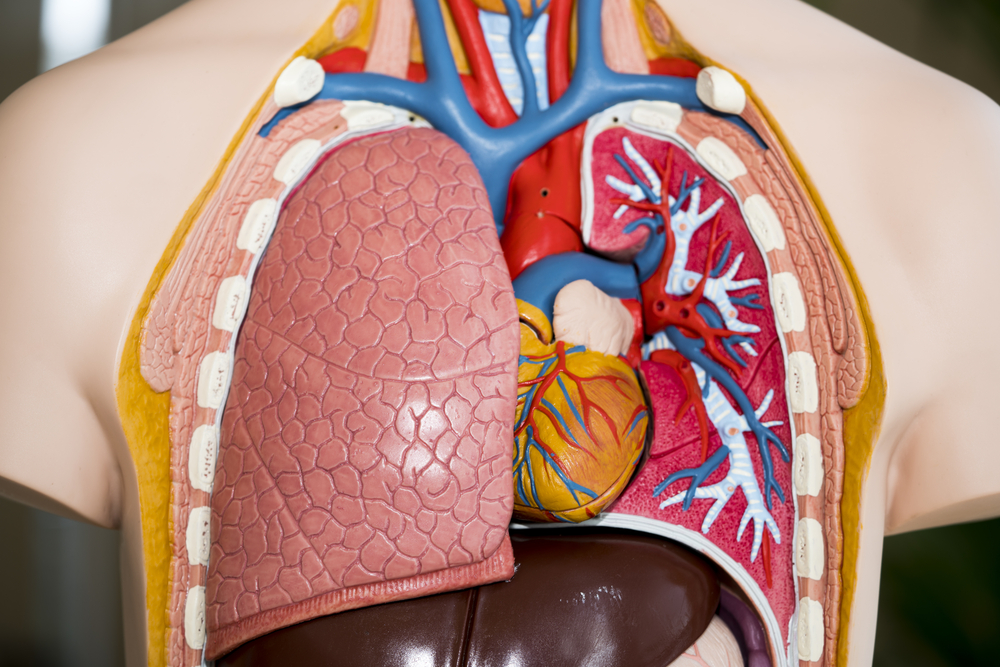IL-17 Protein Seen to Promote PH Linked to Lung Diseases Like COPD in Study

Interleukin-17 (IL-17), a proinflammatory protein, appears to play important roles in the development of hypoxic pulmonary hypertension (HPH), a common and potentially life-threatening condition in people with chronic lung diseases, an early study suggests.
Lung tissue of patients with HPH show increased IL-17 levels, and preventing its production or blocking its activity eased disease severity in mouse models.
IL-17 was also seen to trigger alterations in blood vessel cells in the lab that mimic those known to occur in HPH patients, making it a potential treatment target, researchers suggest.
The study reporting these findings, “Targeting IL-17 attenuates hypoxia-induced pulmonary hypertension through downregulation of β-catenin,” was published in the journal Thorax.
Unlike pulmonary hypertension that occurs as an isolated disease, HPH is linked with underlying chronic lung diseases marked by hypoxia, like bronchiectasis and chronic obstructive pulmonary disease (COPD).
Hypoxia happens when tissues do not receive enough oxygen to work properly, potentially damaging organs that include the heart, lungs, brain, and liver.
HPH is marked by pulmonary vasoconstriction, or narrowing of blood vessels, and pulmonary vascular remodeling — an active process of structural changes in blood vessels involving chronic inflammation, cell growth, and cell death.
Vascular remodeling contributes to a great extent to the increase in pulmonary arterial pressure and pulmonary vascular resistance, which existing therapies are unable to reverse.
Given the increase in disease burden and mortality associated with HPH, it is “urgently required” to explore mechanisms underlying this process and identify new therapeutic targets, the researchers said.
They set out to study whether IL-17 could be a new target for HPH treatment.
IL-17 is a strong inducer of inflammation, which normally helps to protect the body against invading microbes. But chronic inflammatory conditions can do harm by damaging tissues.
To study IL-17’s role in HPH, researchers measured its levels in lung tissue samples from three bronchiectasis patients with HPH and three without it, and in blood samples of COPD patients with HPH (29 people) and those without it (36). Control samples from people without these diseases were also analyzed.
They also performed studies in mouse models of HPH.
Results showed higher than usual IL-17 levels in lung tissue and blood of bronchiectasis or COPD patients with hypoxia-induced PH, as compared to those without HPH or to controls. A similar increase in IL-17 was found in mice with HPH-like disease compared to healthy mice.
These results suggested IL-17 is indeed involved in the development of HPH.
Consistent with this possibility, mice genetically engineered to lack IL-17 had milder induced HPH, which became aggravated when IL-17 was restored to their systems. Importantly, blocking IL-17 through administration of an antibody targeting this protein also attenuated HPH.
To look deeper at the effects of IL-17 in blood vessels, researchers performed a series of experiments with human pulmonary arterial endothelial cells (HPAECs; cells that line the inner side of artery walls) cultured in the lab.
In cultured cells, IL-17 was seen to further many processes related to vascular remodeling. It promoted cell proliferation, the formation of new blood vessels (angiogenesis), and adhesion of cells. IL-17 induced these changes by activating a specific biological pathway involving Wnt and β-catenin proteins, the scientists reported.
β-catenin is involved in many important biological processes, acting both as a ‘molecular anchor’ in cell-to-cell attachment, and a signaling molecule controlling the activity of specific genes.
Supporting IL-17’s role in vascular remodeling, manipulation of endothelial cells to prevent the formation of β-catenin was found to almost completely reverse IL-17-mediated effects, reducing pulmonary artery remodeling events.
“In conclusion, this work implicates IL-17 as a mediator of HPH, and targeting IL-17 is a potential novel anti-inflammatory therapeutic strategy for the clinical treatment of HPH,” the researchers wrote.







